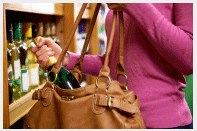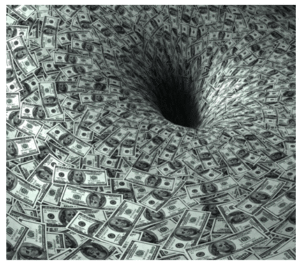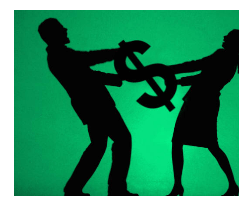 “Think globally, act locally” is a saying associated with the Green Movement. It encourages people to be aware of the environmental needs of the whole planet, while taking positive action in their own communities to promote its health. Over the years the idea, and the phrase, has been co-opted to discuss other issues.
“Think globally, act locally” is a saying associated with the Green Movement. It encourages people to be aware of the environmental needs of the whole planet, while taking positive action in their own communities to promote its health. Over the years the idea, and the phrase, has been co-opted to discuss other issues.
One of these other issues is the problem of loss prevention. It’s a national problem that can only be solved on a local level. It’s becoming clearer to law enforcement and loss prevention specialists that while broad, generalized recommendations have validity, they’re only the place to start. True prevention success depends on how they’re applied on a city by city, store by store basis.
Here are some things to think about when assessing the needs of your particular store and its loss prevention requirements.
High-risk goods – What are they? Where are they displayed vs where they should be for tighter security? Who should be responsible for monitoring them and how should they be tracked? What are their margins and what’s the ROI (return on investment) to protect them?
Thief profile – Who’s stealing from you? How much of your problem is internal (employees) vs external (shoplifters)? Does your merchandise attract petty thieves or professional ones, and how should you deal with the different types?
Risk tolerance – How much risk can you tolerate financially, systemically and personally? Where are you comfortable putting your efforts and money (i.e., guards, staff training and hiring practices, technology/equipment, aggressive prosecution)?
Community resources – How involved and interested is your local police department in the problem? What help and resources do they provide? What community resources can you draw on (Chamber of Commerce, merchant organizations, neighborhood block watch, Better Business Bureau)?
Store layout – Do you know your store’s blind spots? How can they be covered? Do goods disappear from one area more than another? When was the last time you really evaluated the lay out for security holes? Do you need someone with fresh eyes to look it over?
There are a lot of good loss prevention ideas and recommendations available. But, they’ll work better if you adapt them to the specific needs of the store, its customer base and merchandise. They’ll also be more effective if you combine them with the community’s resources, where your combined local efforts just might impact the global good.
Nicole Abbott is a professional writer who’s had over 200 articles published. She’s a business consultant and former psycho-therapist with over 20 years of experience in mental health, business and addiction. She’s a coach, lecturer, trainer and facilitator. She has conducted over 200 workshops, trainings, presentations, seminars and college classes.



 Yep, you probably are! The shoplifter that walked out the door with your $45 item cost you MORE actual money than $45!
Yep, you probably are! The shoplifter that walked out the door with your $45 item cost you MORE actual money than $45!
 I’m sure you’ve already read how shoplifters cost you money. It’s probably hard to digest the dire financial implications that shoplifters have on all of our businesses. Without adequate controls in place, you are putting your business and your financial well-being at risk, and honestly, you just can’t do that. That’s why we have to have a camera system and why EAS systems are a necessity and not just a “nice to have” technology. That’s exactly why we have to invest in exception reporting tools to help us identify criminal activity and why we preach the value of exceptional customer service in our stores.
I’m sure you’ve already read how shoplifters cost you money. It’s probably hard to digest the dire financial implications that shoplifters have on all of our businesses. Without adequate controls in place, you are putting your business and your financial well-being at risk, and honestly, you just can’t do that. That’s why we have to have a camera system and why EAS systems are a necessity and not just a “nice to have” technology. That’s exactly why we have to invest in exception reporting tools to help us identify criminal activity and why we preach the value of exceptional customer service in our stores. You have (or I hope you have) read the last article on preventing check fraud. It’s a great way to protect your business from a different avenue of fraud. Another, much more popular and prevalent scheme is credit card fraud. The United States lags far behind the other major countries in the fight against credit card fraud. We’ve only just begun adopting chip and pin technology and it will be several more years before we see magnetic strips become a relic of the past. So exactly how can you identify and prevent a fraudulent change from happening in your store and how exactly do you lose money on these transactions?
You have (or I hope you have) read the last article on preventing check fraud. It’s a great way to protect your business from a different avenue of fraud. Another, much more popular and prevalent scheme is credit card fraud. The United States lags far behind the other major countries in the fight against credit card fraud. We’ve only just begun adopting chip and pin technology and it will be several more years before we see magnetic strips become a relic of the past. So exactly how can you identify and prevent a fraudulent change from happening in your store and how exactly do you lose money on these transactions? You know, we talk about the thousands of ways you, the small business owner, loses money to thieves constantly. Most of that is centered on shoplifters and boosters stealing your merchandise. We talk about that for good reason… it’s one of the biggest financial impacts to your business if left unchecked. However, there are so many other ways that your business can be targeted by criminals and some of them may appear so legitimate, that you would have no idea you were a victim for weeks. In that time, the criminal is long gone and you’re left paying for that theft out of your pocket. One area of training that is often overlooked in retail is check fraud. I’ll give you some advice on how to identify this in your store and protect yourself from vulnerability.
You know, we talk about the thousands of ways you, the small business owner, loses money to thieves constantly. Most of that is centered on shoplifters and boosters stealing your merchandise. We talk about that for good reason… it’s one of the biggest financial impacts to your business if left unchecked. However, there are so many other ways that your business can be targeted by criminals and some of them may appear so legitimate, that you would have no idea you were a victim for weeks. In that time, the criminal is long gone and you’re left paying for that theft out of your pocket. One area of training that is often overlooked in retail is check fraud. I’ll give you some advice on how to identify this in your store and protect yourself from vulnerability.